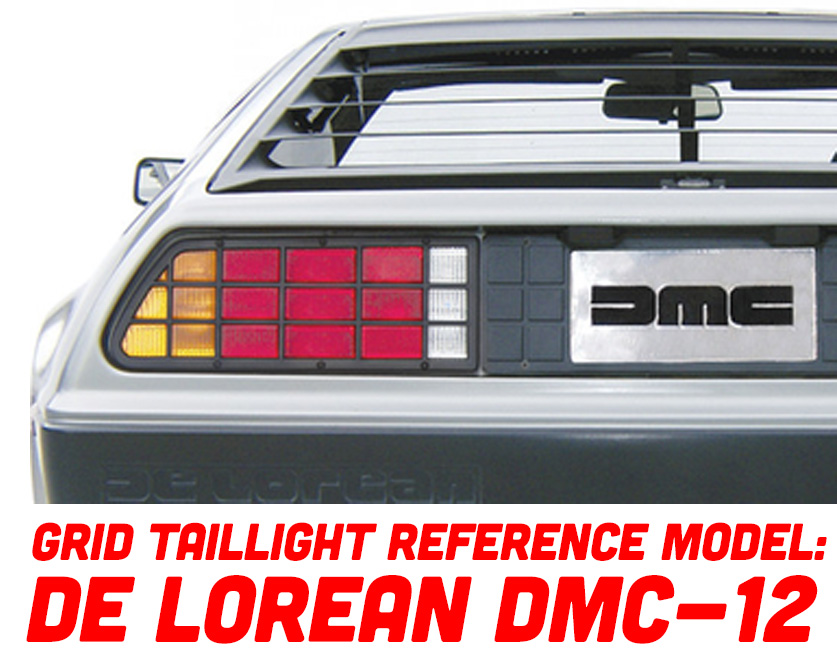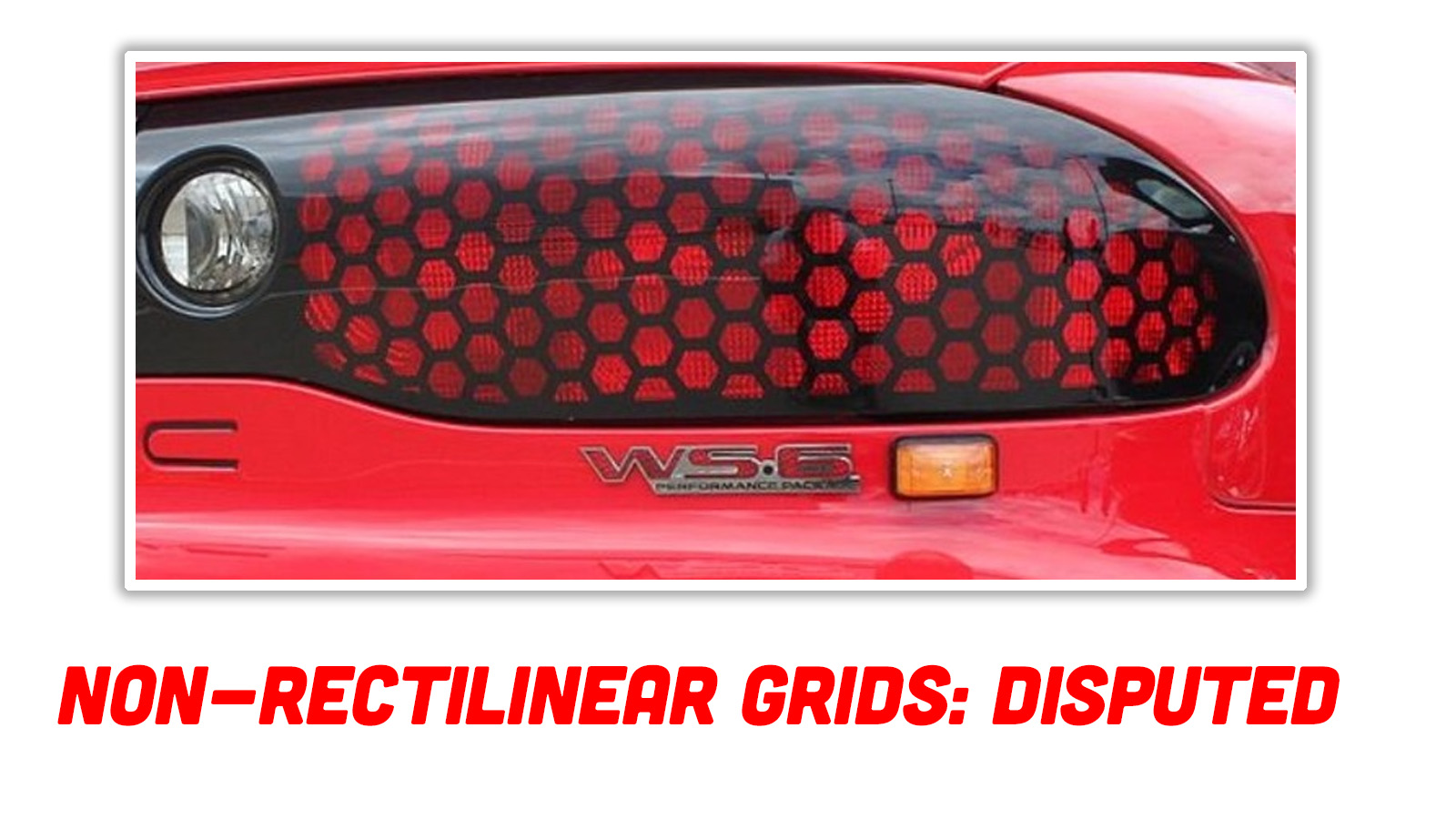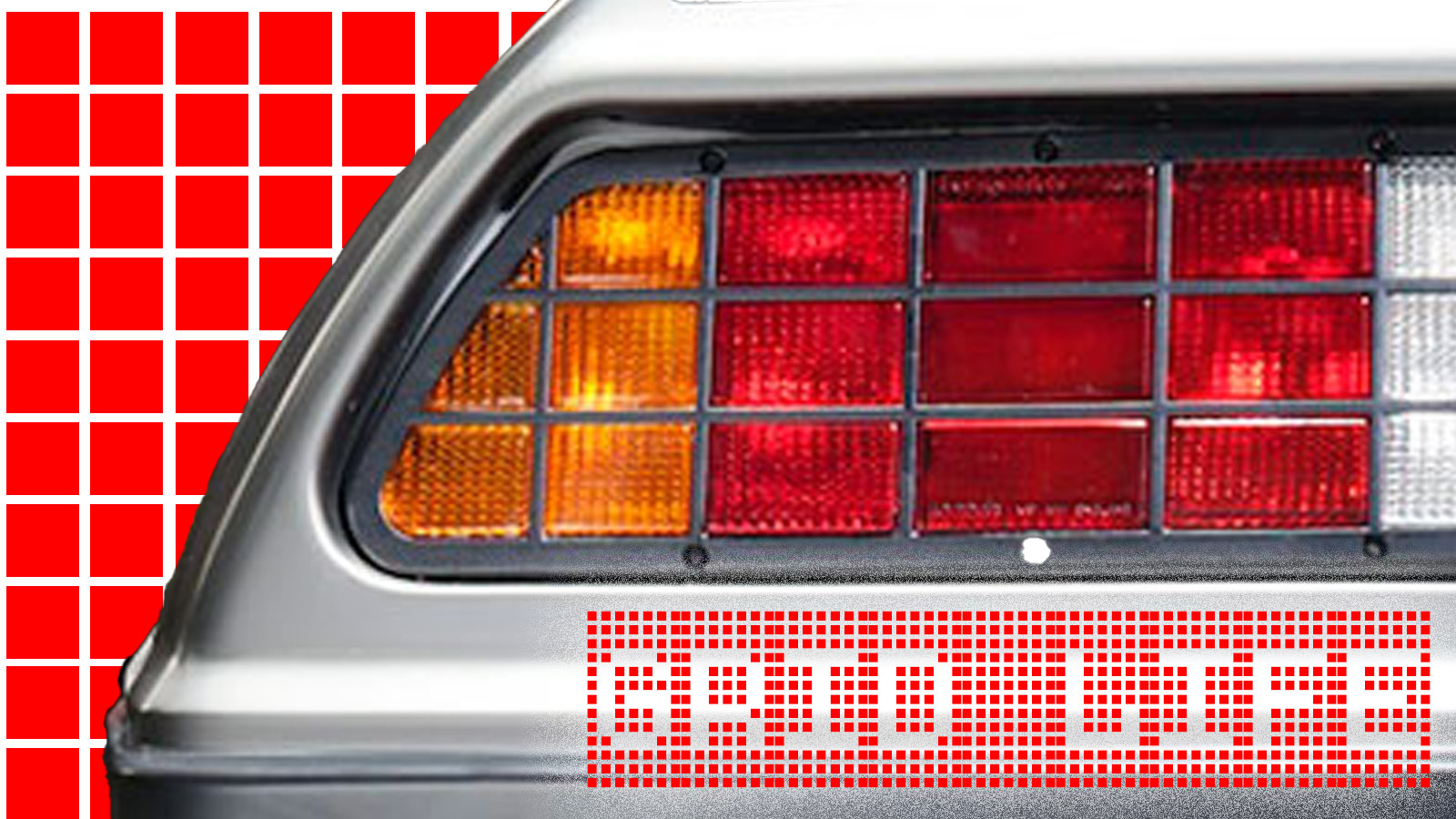The governing body that establishes categories and taxonomies for taillights, the International Taillight Standards Institute (ITSI), is technically part of UNESCO, and has been since 1965, as an attempt to quell the Retroreflector Riots that were plaguing Berlin for weeks. The recognition of taillights as a human cultural activity worthy of preservation and careful curation settled the then (and, let’s be honest, still) volatile taillight culture, and remains an important guidepost in the taillight community to this day. I’m on ITSI’s Telex notification list, so when there’s big news, I hear it clacking out of my teleprinter at around 3 a.m., because the Paris headquarters of UNESCO is about six hours ahead of where I am.
I was woken last night at about 3 a.m. by just such a clacking. I was hopeful that it was to announce that my proposed category, the Layer Cake, had been officially ratified. I was a little disappointed to find it wasn’t that, but not too surprised, as ITSI is not a well-run organization and they have a backlog of several years’ worth of taillight taxonomy recognition and other business.
Still, that clatter did mean that something happened, and when I finally put on some low-friction pants and slid down the pole into my Telex/Telegraphy pit, I was delighted to tear off the paper from the teletype and see that, finally, the Grid Taillight had been accepted as an Official Taillight Class.

Whenever a new taillight class is accepted, the taxonomy committee at ITSI selects a “reference model” taillight that they feel gives a good overall general sense of what the new class is. In this case, ITSI picked the DeLorean DMC-12 taillights, which they felt represented the “physical design characteristics and overall functional and aesthetic goals and motivations of the Class.” And you know what? I think they’re right.
The Grid Taillight is a taillight that is, as you can guess, designed to look like a grid. There’s a good bit of variation in how this grid can be executed (more on that soon), but essentially it must have a series of regular, largely rectilinear, mostly consistently-sized cells. The borders can break the grid (see the angled edge of the DeLorean taillight up there), but overall, the grid’s look is key to the taillight’s design. The addition of extra-taillight grid elements (see the 2×3 grid of black squares between the taillight and license plate on the DMC) are part of the overall look of a true Grid Taillight, but are not required.
Taillight fetishists and researchers alike have been pushing for this for a long time, at least since the 1980s, when Grid Taillights (and grids in general) took on a greater sociocultural aesthetic relevance. Even better, it looks like ITSI researchers even broke down the class into five subcategories:

These categories are interesting, and we’ll go through them one by one:
Dimensional Cell: These taillights have lenses with grid cells that are raised above their dividing lines. The DeLorean taillight is like this (the rectangles of the lenses are slightly raised), and some cars, like the Dodge 600, are quite dramatically raised, looking like a grid of red and clear Jolly Ranchers. 1985 to 1992 Camaro taillights fit in this category, too, and the category is broad enough to include more irregular grid designs like the Nissan Stanza Wagon and Isuzu Piazza/Stylus. In all of these, there was a clear design goal to have grid taillights.
Dimensional Grid: These taillights usually consist of a flat lens with a raised grid placed over them, so the lens is recessed behind the grid lines. Some of the earliest grid taillights are like this, like the 1968 Oldsmobile Delta 88 (at far right of Dimensional Grid category in the chart). GM was especially fond of this method, using it on Pontiacs frequently.
Graphical: Speaking of Pontiac, the Graphical category – where a flat, usually black, grid pattern is silkscreened or otherwise printed on an outer taillight lens to give the visual effect of a grid – was very popular among that brand’s cars. Grand Ams, Firebirds, Grans Prix, Trans Ams, and other cars used these striking Grid Taillights.
True Matrix: This category is the newest, and is currently dominated by Korean brand Hyundai. Only possible recently due to technological innovations with LEDs, these are sort of the idealized expression of the Grid Taillights, where each cell is an independent light unit of its own. Hyundai’s Ioniq 5 and 6 models use this style, as did Hyundai’s recent Grandeur concept car.
Functional/Irregular Grid: This category is interesting, as it includes taillights that are sort of inadvertent grids, where the function of the lights, trunk cutlines, or other factors dictated the division of the taillight into a grid-like configuration. The Volvo 240 sedan taillights are a good example of this. Also in this category are taillights with dramatically inconsistent grid cell sizes, like the 1984 and up Volkswagen Golf taillights.

Based on leaked reports and some late-night phone calls to a few of my insiders at ITSI, I learned that non-rectilinear grids were not included in the Grid Taillight Class, but there was and (still is) a lot of debate and dissension there. Pontiac, strangely, still has a lobbying arm even though the brand has been gone since 2010, and their representatives were pushing to get the honeycomb taillights of the 1990s Trans Am included in the Grid Class, but it seems to no avail.
I’m not sure how I feel about the non-rectilinear grid question, but overall, I’m delighted that Grid Taillights are now an officially recognized and protected class of taillight. I think I’ll head over to that new taillight bar in town, Backbeam, and put away a couple of Ruby Gin Blinkers in honor of this historic day.
Come find me! I’ll be the one with a shirt stained with very red vomit!
Support our mission of championing car culture by becoming an Official Autopian Member.









Just leaving another comment so you get a hundred for this article and can keep doing tail light articles with the new editors. I’s all about the clicks, buddy. I’ve been racking my brain about gridded tail lights, and Jason, you scratched the surface on the this vast subject. Something I haven’t seen an article on much is vehicle graphics and pinstripes. I paid for part of my tuition putting graphics on cars back in the early 80’s. Ever seen a Ford Mustang laser 2 edition? Well if you would have bought a stang back in the day you might have scored an exclusive dealer supplied add on. It even had a stick on dash plaque to display your good taste! On a side note, when a package of instant gravy mix advises not making it in the microwave without a cover, heed the warning. Looks like I’ll be microwave shopping tomorrow. Sad thing is, the fricken gravy came out lumpy.
Wow. I just realized I’ve had a lot of cars with grid taillights.
I’ve had three S12 200SXs (that were left off your list).
I’ve had 3rd gen Camaros (and Firebirds, but not the trim / year that offered grids)
Currently I have an Ioniq 5.
I guess I have a type and I’ve never realized it before.
My sister traded in her Tesla 3 on an Iconiq 6 after Musk went nutso. Her favorite feature of the 6 is the pixels in the tail lamps. Even the chml has pixels! My BIL traded in his tesla s for an Iconiq 5, his favorite feature is, well, not the pixel lights, but the infomat system. oh, and the useable back seat.
BTW, Iconiq 5’s are damm comfy cars to play passenger in. Good choice my friend!
wow, 3? I had a white ’84 turbo. I would love to have that car back!
I had an ’84 notchback, 85 hatchback (parts) and an 87 hatchback.
I think the 84 was titled as a Datsun Nissan 200SX because that was the year they changed their name.
If taillights have a light that comes on to show when you’re braking why don’t they have a light that shows when you’re accelerating?
It’s the regular tail lights.
They shrink on acceleration.
Hahaha
The ITSI is relentlessly methodical, and I think we could all learn a little something from this approach. Another thing I learned — and that surprised me — was that it’s ITSI’s 60th anniversary. Surprising that Jason didn’t spotlight that milestone, and that Backbeam wasn’t offering some sort of drink/burger special. Maybe Chum Sills, around the corner, is.
Love the worldbuilding in this article. 😀
Tangent: I saw a DeLorean the other day, and while I know they’re terrible cars in many ways, damn do they look cool.
And what about the fake led lights on the Peugeot 206 mk2, 307 CC and 407 coupe ?
This is the kind of content you won’t find anywhere else and I’m here for it.
This is a subject near and dear to my heart, and I must raise a glass to my favorite grid taillight, the “six-pack” tails of the 1984-86 Nissan 200SX. I’d say they fall under the “functional” sub-category, and that includes the black vanes along the outer edges. They sit over a one-way vent which acts as the exit for through-cabin airflow.
I had an ’84 turbo. Not fast by any measure these days, but I was 17 and boy did that car feel cool!!!